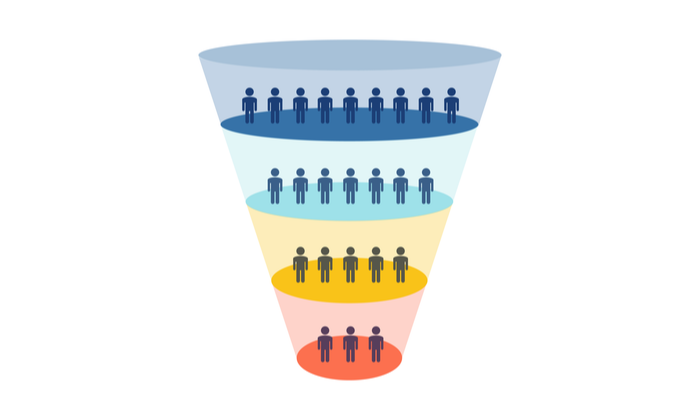How to Create a Funnel Report [Quick Guide]

You’ve probably heard that it’s crucial to keep a full, flowing funnel for a business. But what does this mean, and how do you know when you’re on the right track?
Funnel reporting is key to understanding the inner workings of your business. With a detailed funnel report, you can see where customers are at every stage of the sales process. The funnel report can show how many leads you are generating, what deals are being negotiated, what contracts are being finalized, and, ultimately, how many sales are going through.
Knowing your funnel at all times can help ensure that funnel doesn’t dry up, leaving you without leads or consistent sales. So, let’s dive into what exactly funnel reporting is and how to create a funnel report.
What is funnel reporting?
Before you understand funnel reporting, you need to understand the funnel. The funnel is essential to mapping out the customers’ journey to purchasing, from brand awareness all the way through to a sale. Keeping a funnel full of ongoing leads is important to a thriving business.
As such, a funnel report can give insight as to how a customer discovers your brand and what leads them to either flow through the funnel all the way to purchase or drop off somewhere along the way.
The funnel report can determine how effective your marketing efforts are, the number of people coming into the funnel, and conversion rates. This report can also provide insight into ongoing lead generation and sales, so you can see just how many leads you are generating and how many are in the process of signing contracts or making purchases.
1. Awareness
As the customer first enters your funnel, it’ll be through awareness. There are many ways a potential customer can first hear about your brand, whether they hear about your product through word of mouth, see an ad on Instagram, or pass your billboard while driving to work.
2. Interest
Once the customer has found your brand, if they like what they see, they’ll likely start doing some digging. Reading reviews, checking out your FAQ section, and comparing you to competitors are all likely to happen in this stage.
3. Decision
Now, the potential customer will start really considering making a purchase. They might consult with a sales rep or ask for pricing quotes.
4. Action
As the customer moves through the funnel, they will use the information gathered from the previous steps to decide whether or not to make a purchase. That’s why investing in excellent branding, marketing, and customer service is so important, as they will each leave an impact throughout the funnel process and can ultimately be a make-it-or-break-it situation for potential clients.
Ready to start reporting? Here’s how to create a funnel report. These reports can typically be generated through tools like Google Analytics. To make it easier, consider Dashboard & Reporting Software, which will house all your analytics, reports, and dashboards in one easy-to-navigate space.
1. Input Data
Source:: HubSpot Blog

![→ Free Download: Free Marketing Reporting Templates [Access Now]](https://no-cache.hubspot.com/cta/default/53/0d883e85-c2e5-49bb-bef2-bfddb500d84b.png)








